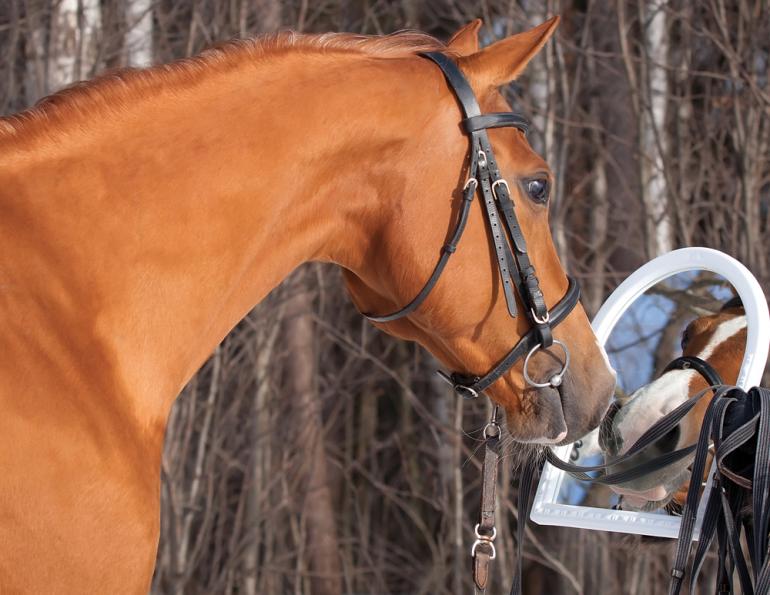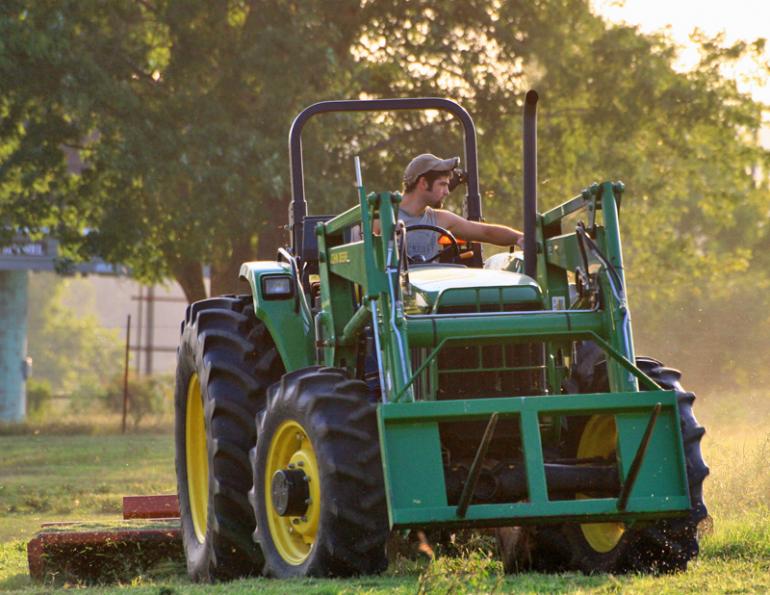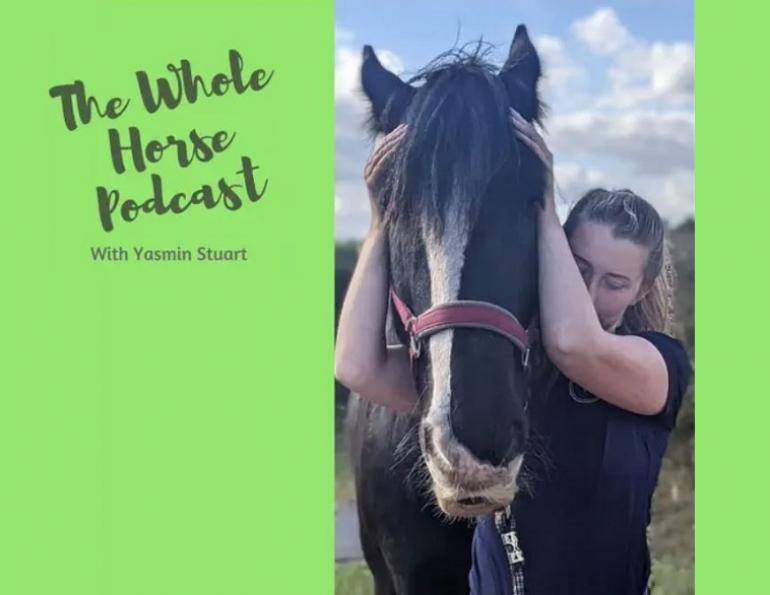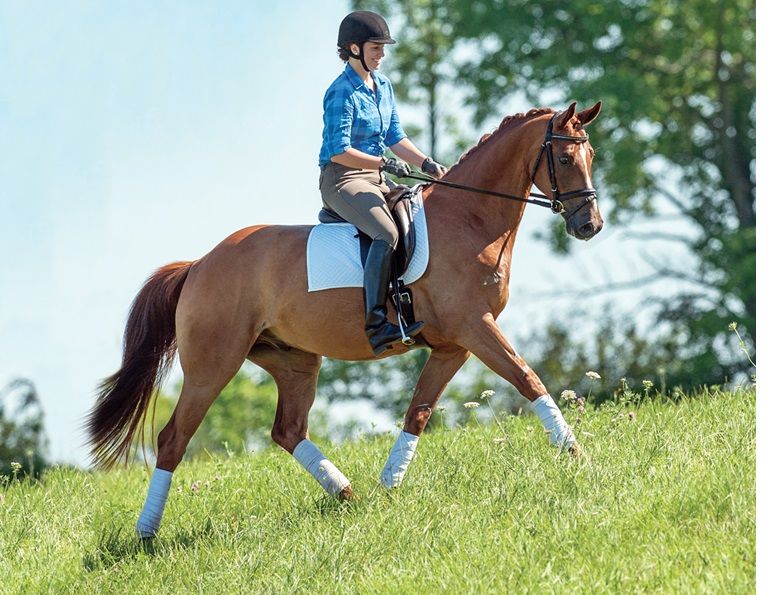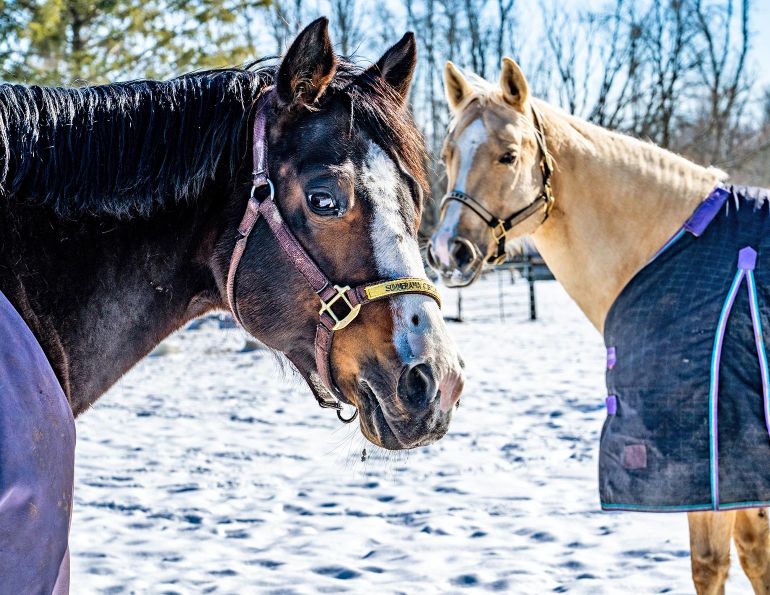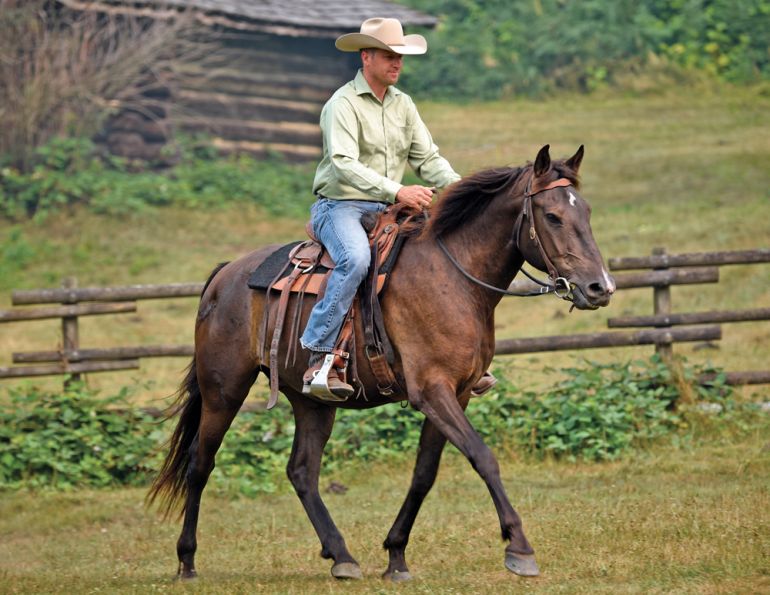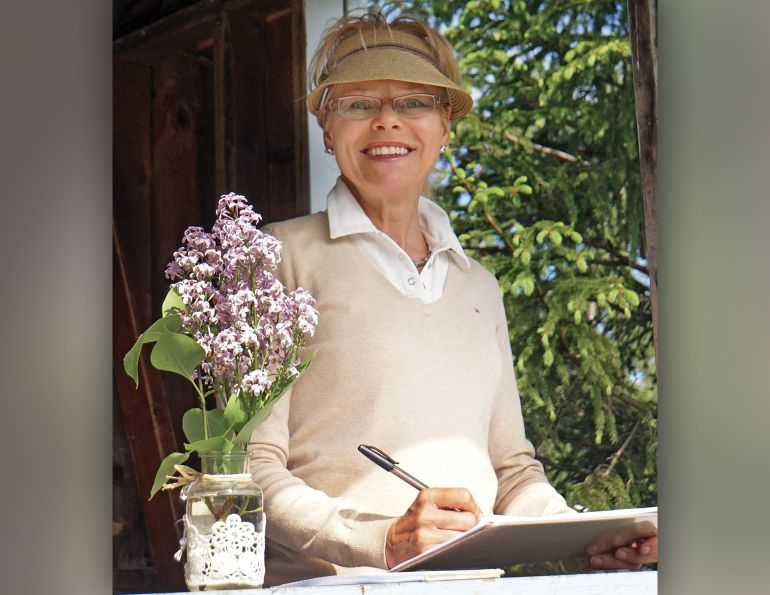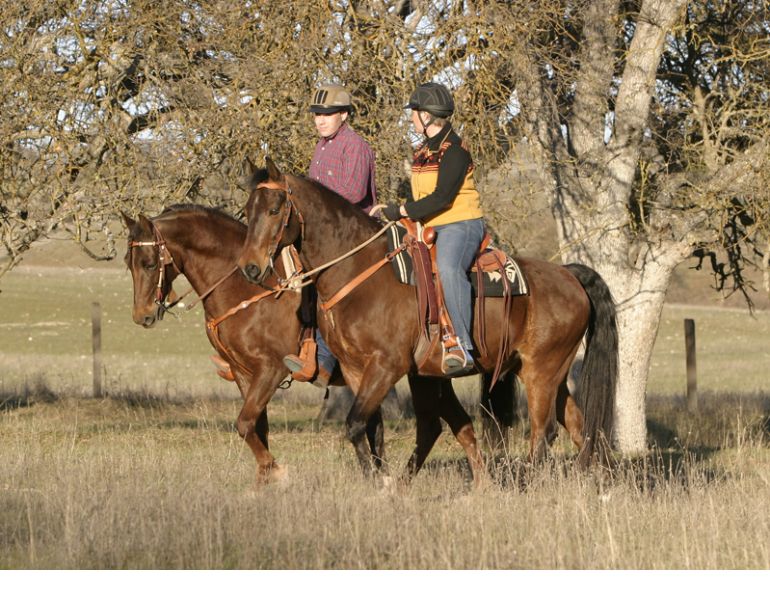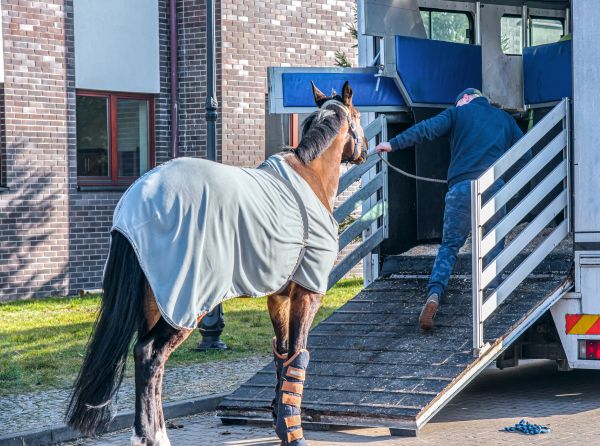What is it and how can it help horses and riders?
By Tania Millen, BSc, MJ
Sara Sellmer is a British Columbia-based upper level three-day-eventing rider and coach who has discovered the benefits of equitation science. About five years ago, Sellmer went to a clinic with Andrew McLean, one of the most well-known researchers in the field of equitation science.
“Basically (equine scientists) have done research and identified what works best (for training) in conjunction with how horses learn,” she explains. “It’s huge for horses. For so long, our training systems have been barbaric. But once you get into the brain of them, it’s so fun and easy for both of you. It was a pinnacle moment for me with horses because it described how they learn, and how they think, and how they react to things. It isn’t a method — it’s just understanding the animal.”

Above/Below: Sara Sellmer competing at the Woodside International Horse Trials in 2019. She believes that with knowledge of how horses learn, training is easier, safer, and fairer for the horse. Photos: Kim F. Miller/Kellerhouse Presents
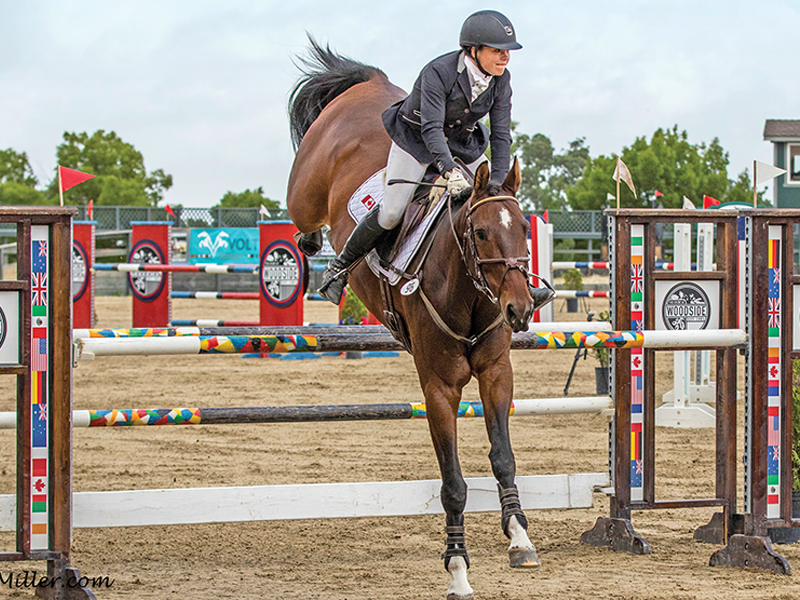
That understanding intrigues many professionals in the horse world. Tanya Bornmann, an equine scientist based in Ontario, is also a licensed international coach and academic member of the International Society for Equitation Science (ISES).
“Horses are not born to naturally understand what humans want from them. Only through correct training will they eventually become reliable and safe riding, driving, working, or companion horses,” she says.
“How can we achieve this? We have two choices: use undue force or unjustified punishment to ‘break’ the horse, perhaps creating a state of learned helplessness; or, apply the principles of learning theory to modify their behaviour,” she explains.
“Knowledge of the correct application of learning theory is extremely important when interacting with horses, regardless of whether it’s from the ground, or in competition. Every horse learns the same way and it’s the trainers’ and riders’ responsibility to become educated about learning theory. We owe this to our horses.”
Bornmann isn’t alone in her thinking. In the early 2000s, concerns arose about the detrimental effects of hyperflexion or rollkur on horses during training and competition. These concerns evolved and some horse industry professionals became highly interested in preventing mental distress and physical harm to horses, which can then compromise horse welfare or rider safety. As riders and trainers became more engaged, the concept of equitation science evolved and ISES was born. The mission of the organization is to support research into how horses learn, plus promote and encourage training practices that utilize the findings of current learning theory research.
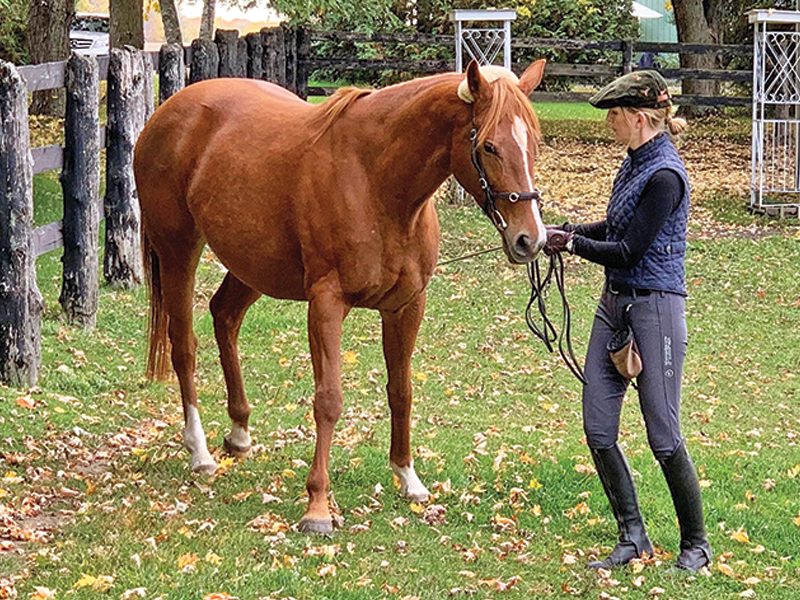
Because every horse learns the same way, trainers and riders owe it to their horses to educate themselves about learning theory says equine scientist, Tanja Bornmann. Photos courtesy of Tania Millen.
So, what is learning theory for horses? According to a one-hour online course by Equitation Science International (ESI), horses learn through desensitizing (habituation, overshadowing), negative reinforcement (pressure-release), positive reinforcement (rewards), and classical conditioning (cues). The way horses learn is due to how they think: they form associations between things, have a highly developed fear response, an almost photographic memory, and are good at learning through trial and error. High quality training involves utilizing this knowledge of how horses learn and think, to teach horses what we want from them. This, in turn, ensures that the horse’s welfare is not compromised, and both horse and trainer remain safe.
The course further notes that, unlike humans, horses cannot think about a previous action, so they don’t do anything with motive or intent. Additionally, punishing horses inhibits their learning, and may result in the horse associating fear with the handler or environment. Minimizing horses’ fear and stress, and not allowing fearful behaviour to occur, is an imperative part of good training.
Interestingly, the course teaches that horses need to confidently complete specific activities about five times before they can associate similar activities. For example, a horse needs to confidently walk across five different bridges before he assumes that all bridges are safe. Plus, since horses can only think about one thing at a time, it’s important to break down training into small individual steps. Where pressure is used to motivate the horse to do something (such as leg pressure to move the horse sideways), it’s actually the well-timed release (removing the leg pressure) that the horse learns from.
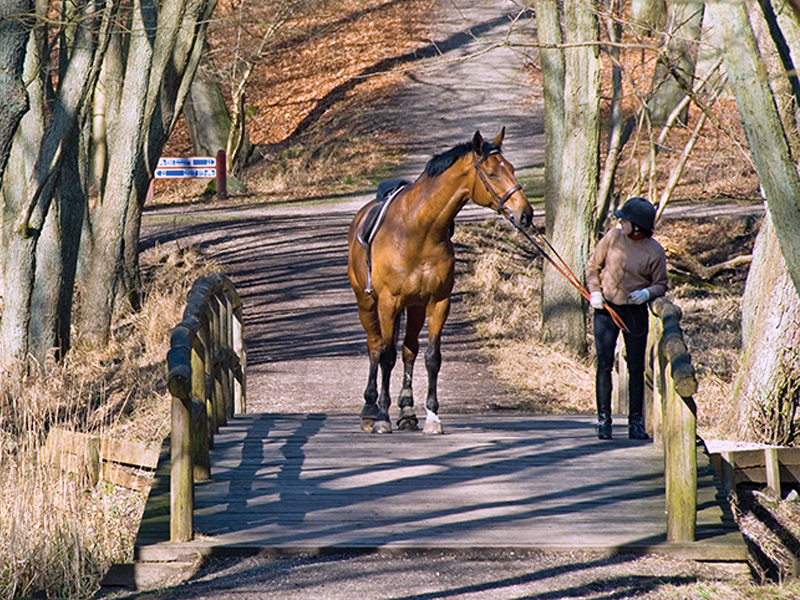
A horse needs to complete specific activities about five times before associating similar activities. For example, before the horse assumes all bridges are safe, he needs to confidently cross five different bridges. Photo: Shutterstock/jps
Sellmer believes that having knowledge of how horses learn makes training simpler, safer for horses and riders, and fairer for the horses, too.
“A lot of trainers inadvertently think that horses think like humans and have human-like emotions. But they don’t,” she says.
The International Society for Equitation Science (ISES) concurs, stating, “Behaviour problems in the handled and ridden performance or leisure horse, beyond those caused by health and ability factors, should be primarily considered as dysfunctions in application of learning theory.”
To help riders and trainers incorporate learning theory, ISES has created a list of ten principles of horse training, based on how horses learn. The organization has also issued researched-based statements and recommendations about the position of a horse’s head and neck when ridden, the use and misuse of leadership and dominance in horse training, the excess use of pressure, and the use of restrictive nosebands. These statements and recommendations are being incorporated into competition regulations to address concerns about horse welfare.
For Sellmer, understanding equitation science principles and how to apply that knowledge dramatically affected her riding. Prior to taking equitation science clinics, Sellmer was struggling to put everything together at higher levels of three-day-eventing. “Equitation science helped me figure out a system that I can use in all three phases (of eventing) that doesn’t affect the way I ask the horse to turn or flex or stop or slow down or go,” she says. “My language is the same with them every day. Horses like consistency and predictability, so once I had a consistent system for all three phases, then I had a relaxed partner. And when you have a relaxed partner, wonderful things start to happen.”
Bornmann acknowledges that equitation science isn’t just about training and safety, but about horse welfare, too. She would like more coaches, horse trainers, owners, vets, and farriers to understand what the research says. “In my opinion, everyone is responsible for updating their knowledge… but governing bodies such as the FEI [International Federation for Equestrian Sports] and national equestrian federations worldwide should also incorporate this knowledge into their coaching programs. Equitation science researchers have already created a solid foundation of evidence-based knowledge. Now it needs to be transmitted to horse people.”
Fortunately, Sellmer believes that equitation science is starting to catch on. She says, “People are going in the right direction with their training, in my opinion. With eventing in particular… if you watch the top riders, their riding is very much equitation science-based, whether they know it or not.”
As Andrew McLean says, “Every moment we are with our horses, they are learning something we want, something we don’t want, or learning how to ignore you.” So, choosing to train and interact with horses according to how they actually think just makes sense.
For more information, visit the International Society for Equitation Science website: www.equitationscience.com.
Main Photo: To effectively train horses we must understand how they learn and react. Shutterstock/Edoma



